The protective role of GLP-1 in neuro-ophthalmology
Despite recent advancements in the field of neuro-ophthalmology, the rising rates of neurological and ophthalmological conditions, mismatches between supply and demand of clinicians, and an aging po
[...] Read more.
Despite recent advancements in the field of neuro-ophthalmology, the rising rates of neurological and ophthalmological conditions, mismatches between supply and demand of clinicians, and an aging population underscore the urgent need to explore new therapeutic approaches within the field. Glucagon-like peptide 1 receptor agonists (GLP-1RAs), traditionally used in the treatment of type 2 diabetes, are becoming increasingly appreciated for their diverse applications. Recently, GLP-1RAs have been approved for the treatment of obesity and recognized for their cardioprotective effects. Emerging evidence indicates some GLP-1RAs can cross the blood-brain barrier and may have neuroprotective effects. Therefore, this article aims to review the literature on the neurologic and neuro-ophthalmic role of glucagon-like peptide 1 (GLP-1). This article describes GLP-1 peptide characteristics and the mechanisms mediating its known role in increasing insulin, decreasing glucagon, delaying gastric emptying, and promoting satiety. This article identifies the sources and targets of GLP-1 in the brain and review the mechanisms which mediate its neuroprotective effects, as well as implications for Alzheimer’s disease (AD) and Parkinson’s disease (PD). Furthermore, the preclinical works which unravel the effects of GLP-1 in ocular dynamics and the preclinical literature regarding GLP-1RA use in the management of several neuro-ophthalmic conditions, including diabetic retinopathy (DR), glaucoma, and idiopathic intracranial hypertension (IIH) are discussed.
Sohum Sheth ... Brandon Lucke-Wold
Despite recent advancements in the field of neuro-ophthalmology, the rising rates of neurological and ophthalmological conditions, mismatches between supply and demand of clinicians, and an aging population underscore the urgent need to explore new therapeutic approaches within the field. Glucagon-like peptide 1 receptor agonists (GLP-1RAs), traditionally used in the treatment of type 2 diabetes, are becoming increasingly appreciated for their diverse applications. Recently, GLP-1RAs have been approved for the treatment of obesity and recognized for their cardioprotective effects. Emerging evidence indicates some GLP-1RAs can cross the blood-brain barrier and may have neuroprotective effects. Therefore, this article aims to review the literature on the neurologic and neuro-ophthalmic role of glucagon-like peptide 1 (GLP-1). This article describes GLP-1 peptide characteristics and the mechanisms mediating its known role in increasing insulin, decreasing glucagon, delaying gastric emptying, and promoting satiety. This article identifies the sources and targets of GLP-1 in the brain and review the mechanisms which mediate its neuroprotective effects, as well as implications for Alzheimer’s disease (AD) and Parkinson’s disease (PD). Furthermore, the preclinical works which unravel the effects of GLP-1 in ocular dynamics and the preclinical literature regarding GLP-1RA use in the management of several neuro-ophthalmic conditions, including diabetic retinopathy (DR), glaucoma, and idiopathic intracranial hypertension (IIH) are discussed.
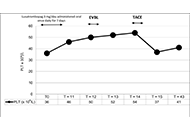 Single or multiple treatments with lusutrombopag in subjects with thrombocytopenia and chronic liver disease needing an invasive procedureOpen AccessCase ReportThrombocytopenia is one of the most frequent implications of liver cirrhosis. This condition, when present in the severe form [platelet count (PLT) less than 50 × 109/L] correlates, with an increas [...] Read more.Davide Scalabrini ... Pietro AndreonePublished: August 30, 2023 Explor Drug Sci. 2023;1:292–298
Single or multiple treatments with lusutrombopag in subjects with thrombocytopenia and chronic liver disease needing an invasive procedureOpen AccessCase ReportThrombocytopenia is one of the most frequent implications of liver cirrhosis. This condition, when present in the severe form [platelet count (PLT) less than 50 × 109/L] correlates, with an increas [...] Read more.Davide Scalabrini ... Pietro AndreonePublished: August 30, 2023 Explor Drug Sci. 2023;1:292–298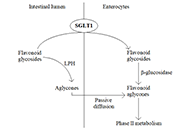 Could flavonoid aglycones prevent the absorption of flavonoid glycosides by inhibiting sodium-dependent glucose transporter-1 in the small intestine?Open AccessCommentaryFlavonoids present a large group of natural polyphenols with numerous important health benefits for preventing and treating a diverse variety of pathological conditions. However, the actual therapeu [...] Read more.Katrin SakPublished: August 30, 2023 Explor Drug Sci. 2023;1:287–291
Could flavonoid aglycones prevent the absorption of flavonoid glycosides by inhibiting sodium-dependent glucose transporter-1 in the small intestine?Open AccessCommentaryFlavonoids present a large group of natural polyphenols with numerous important health benefits for preventing and treating a diverse variety of pathological conditions. However, the actual therapeu [...] Read more.Katrin SakPublished: August 30, 2023 Explor Drug Sci. 2023;1:287–291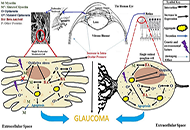 In silico study about β-amyloid’s role in Alzheimer’s disease and glaucoma and prediction of its interactions with glaucoma related proteinsOpen AccessOriginal ArticleAim: The significance of β-amyloid protein as a key player in neuro-degenerative disorders viz. Alzheimer’s disease (AD), Parkinson’s disease (PD) has been extensively researched and reporte [...] Read more.Nancy MauryaPublished: August 29, 2023 Explor Drug Sci. 2023;1:276–286
In silico study about β-amyloid’s role in Alzheimer’s disease and glaucoma and prediction of its interactions with glaucoma related proteinsOpen AccessOriginal ArticleAim: The significance of β-amyloid protein as a key player in neuro-degenerative disorders viz. Alzheimer’s disease (AD), Parkinson’s disease (PD) has been extensively researched and reporte [...] Read more.Nancy MauryaPublished: August 29, 2023 Explor Drug Sci. 2023;1:276–286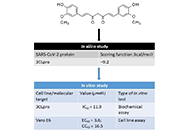 Natural compounds from medicinal plants against COVID-19Open AccessReviewThe severe acute respiratory syndrome coronavirus-2 (SARS-CoV-2), known to cause the coronavirus disease 2019 (COVID-19), was declared a pandemic in early 2020. During the past time, several infecti [...] Read more.Anton Kolodnitsky ... Vladimir PoroikovPublished: August 28, 2023 Explor Drug Sci. 2023;1:253–275
Natural compounds from medicinal plants against COVID-19Open AccessReviewThe severe acute respiratory syndrome coronavirus-2 (SARS-CoV-2), known to cause the coronavirus disease 2019 (COVID-19), was declared a pandemic in early 2020. During the past time, several infecti [...] Read more.Anton Kolodnitsky ... Vladimir PoroikovPublished: August 28, 2023 Explor Drug Sci. 2023;1:253–275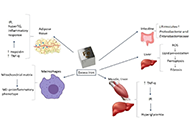 Iron depletion in “metabolic fatty liver syndromes”: a strong biological rationale with disappointing liver outcomesOpen AccessReviewNonalcoholic fatty liver disease (NAFLD), its more rapidly progressive steatohepatitic variant [nonalcoholic steatohepatitis, (NASH)], and the recently defined metabolic dysfunction-associated fatty [...] Read more.Amedeo LonardoPublished: August 28, 2023 Explor Drug Sci. 2023;1:239–252
Iron depletion in “metabolic fatty liver syndromes”: a strong biological rationale with disappointing liver outcomesOpen AccessReviewNonalcoholic fatty liver disease (NAFLD), its more rapidly progressive steatohepatitic variant [nonalcoholic steatohepatitis, (NASH)], and the recently defined metabolic dysfunction-associated fatty [...] Read more.Amedeo LonardoPublished: August 28, 2023 Explor Drug Sci. 2023;1:239–252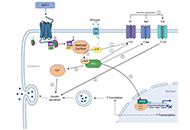 The protective role of GLP-1 in neuro-ophthalmologyOpen AccessReviewDespite recent advancements in the field of neuro-ophthalmology, the rising rates of neurological and ophthalmological conditions, mismatches between supply and demand of clinicians, and an aging po [...] Read more.Sohum Sheth ... Brandon Lucke-WoldPublished: August 28, 2023 Explor Drug Sci. 2023;1:221–238
The protective role of GLP-1 in neuro-ophthalmologyOpen AccessReviewDespite recent advancements in the field of neuro-ophthalmology, the rising rates of neurological and ophthalmological conditions, mismatches between supply and demand of clinicians, and an aging po [...] Read more.Sohum Sheth ... Brandon Lucke-WoldPublished: August 28, 2023 Explor Drug Sci. 2023;1:221–238